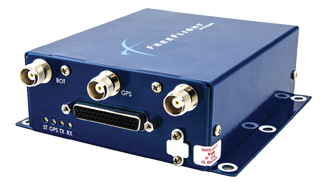The ins and outs of ADS-B
Tips for approaching ADS-B installations
The best way to evaluate how you should approach an Automatic Dependent Surveillance-Broadcast (ADS-B) strategy for your aircraft is to start with an understanding of the "Ins" and "Outs." With the FAA’s deadline for ADS-B Out equipage quickly approaching, we will focus entirely on fully compliant options.
Transponder
If, however, you have a newer transponder such as a Garmin GTX320/327/330, it may make sense to keep it and simply augment your avionics with an ADS-B-only unit. If you have a Garmin GTX330, it can still be upgraded to an ADS-B Out-compliant unit, provided you also have a Garmin WAAS GPS.
ADS-B Out
The 2020 mandate for ADS-B Out compliance only applies to what your aircraft contributes to the ADS-B system (what your aircraft sends out). This includes:
- GPS position
- GPS and baro altitude
- Aircraft velocity
- Rate of turn
- Length and width of the aircraft (for ground taxi clearance)
- Transponder code
- Tail number
- Flight ID (typically same as tail number)
- Does the aircraft have ADS-B In? (yes or no)
Almost all of the data sent out by your ADS-B system requires a WAAS GPS that complies with the ADS-B rules. If you already have a WAAS GPS in your aircraft, you can select an ADS-B system without its own GPS, provided that the two units work together. Fortunately, there are many ADS-B units now with built-in WAAS GPS. This eliminates any compatibility issues and wiring between the units during installation. However, it usually means that you will need to add a second GPS antenna to the outside of the aircraft. L-3 Aviation Products’ Lynx units are an exception to this rule because they include guidance on using a splitter to share an existing GPS antenna between your current GPS navigator and the Lynx system.
In our last segment, we explained that you have two frequency options for ADS-B compliance: 1090 MHz (compliant for all altitudes and worldwide) and 978 MHz (aka “UAT”—only for use within the United States and below 18,000 feet msl). An interesting twist on the decision between using 1090 MHz versus 978 MHz is privacy. That’s right: your ability to remain anonymous depends on your ADS-B solution. If you only fly within the United States below 18,000 feet msl and and are using a 978-MHz ADS-B system, most systems allow your installer to configure it to send only your N number to the ADS-B system at startup. After that, if you are squawking 1200 on your transponder and you are not using air traffic services, your N number will not be identified on open web services such as Flightaware or by ATC. However, 1090-MHz ADS-B systems constantly send both the N-Number and Flight ID set in the transponder. It’s an interesting consideration to factor into your decision-making process.
Let’s begin the ADS-B system decision process with a few questions:
- Does your aircraft already have a WAAS GPS?
- Yes—Determine what ADS-B systems are compatible with your existing GPS and the cost for installation.
- No—Decide if you want to add a WAAS GPS navigator to your aircraft during the installation. Otherwise, limit your ADS-B options to systems with integral WAAS GPS.
- On what frequency do you need to transmit ADS-B Out?
- 1090 MHz—If you fly outside the United States or above 18,000 feet msl, you must use 1090 MHz.
- 978 MHz—If you fly inside the United States and below 18,000 feet msl, you can use 978 MHz. This also gives you a privacy option.
- How reliable is your current transponder?
- It may make sense to replace the entire transponder with a combined ADS-B unit rather than risk future repair costs.
- If you have a Garmin GTX330, you can upgrade it to be ADS-B compliant (with a WAAS GPS).
 These questions will help you narrow the options to those that make sense for both compliance and your wallet. At the lower end of the market (price-wise), both L-3 Avionics Systems and FreeFlight Systems offer excellent low-cost, all-in-one solutions for less than $3,000 that will work with your existing transponder and can even send weather and traffic data to an iPad. These systems are 978 (UAT) ADS-B systems. The top end of the market is occupied by the L-3 Lynx 9000 system: an all-in-one solution that replaces your transponder, displays weather and traffic on an integral touchscreen, has aural traffic alerting (ATAS), and includes WiFi output to a tablet as well as options for active traffic and terrain awareness. More than ever before, there are myriad options to choose from.
These questions will help you narrow the options to those that make sense for both compliance and your wallet. At the lower end of the market (price-wise), both L-3 Avionics Systems and FreeFlight Systems offer excellent low-cost, all-in-one solutions for less than $3,000 that will work with your existing transponder and can even send weather and traffic data to an iPad. These systems are 978 (UAT) ADS-B systems. The top end of the market is occupied by the L-3 Lynx 9000 system: an all-in-one solution that replaces your transponder, displays weather and traffic on an integral touchscreen, has aural traffic alerting (ATAS), and includes WiFi output to a tablet as well as options for active traffic and terrain awareness. More than ever before, there are myriad options to choose from.
Next time, we will talk about ADS-B In and how to choose a solution that gives you the benefits that come with ADS-B equipage. Until then, happy flying!

